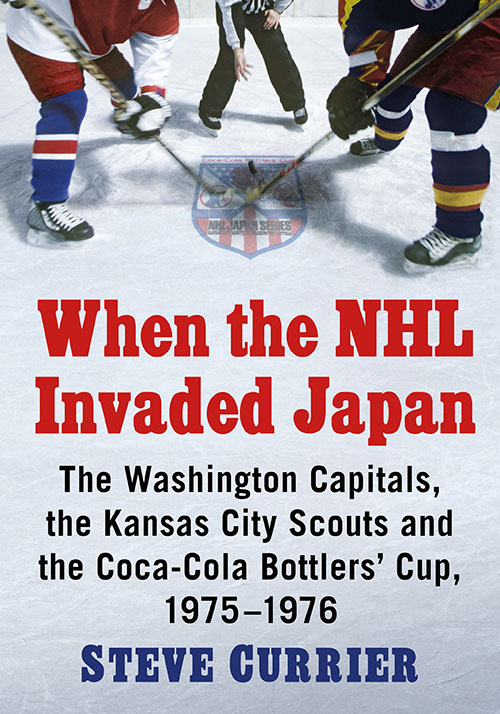When the NHL Invaded Japan
The Washington Capitals, the Kansas City Scouts and the Coca-Cola Bottlers’ Cup, 1975-1976
$39.95
In stock
About the Book
When the NHL announced in early 1976 that its two worst teams, the Washington Capitals and Kansas City Scouts, would travel to Japan for a four-game exhibition series dubbed the Coca-Cola Bottlers’ Cup, fans and media were baffled. The Capitals and the Scouts were both expansion teams, with a combined 46 wins, 236 losses and 38 ties in their first two seasons—stats made more dismal when considering seven of those wins were against each other. Yet lagging so hopelessly behind the rest of the NHL, they were perfect for a one-off event on the other side of the globe. The series was an eye-opening success. Players skated on an Olympic swimming pool ringed with rickety boards hung with fishing nets that boomeranged pucks into their faces, as curious Japanese fans gasped at the gap-toothed Canadians wrestling on the ice. Filled with rare photos and player recollections, this book tells the story of how two league doormats became hockey heroes half-way around the world.
About the Author(s)
Bibliographic Details
Steve Currier
Format: softcover (7 x 10)
Pages: 300
Bibliographic Info: 35 photos, appendix, notes, bibliography, index
Copyright Date: 2022
pISBN: 978-1-4766-8761-2
eISBN: 978-1-4766-4595-7
Imprint: McFarland
Table of Contents
Acknowledgments vi
Preface 1
Period 1
1. Kicking and Screaming: An Introduction to Expansion in the NHL 5
2. In the Beginning 14
3. A Sandy Foundation: The 1974 Expansion Draft 24
Period 2
4. The Washington Capitals, 1974–75 49
5. The Kansas City Scouts, 1974–75 96
Period 3
6. The Washington Capitals, 1975–76 138
7. The Kansas City Scouts, 1975–76 173
Overtime
8. The Coca-Cola Bottlers’ Cup 209
9. Aftermath 235
Appendix: Statistics 251
Chapter Notes 271
Bibliography 283
Index 285





